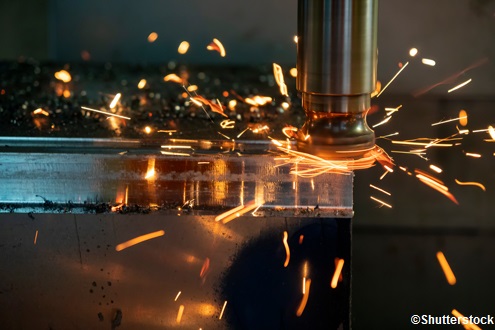OPC UA for High Pressure Die Casting
March, 05 2019
Manufacturers and suppliers from the die casting sector are preparing for the future and are jointly developing a manufacturer-independent interface standard (March 05, 2019)
Many scenarios of the vision Industry 4.0 are only possible by using a manufacturer-independent interoperable information exchange. This also applies to the manufacture of die-cast parts using die casting machines and associated equipment/devices (combined in the so-called die casting cell). For example, the market side places the following requirements on a die casting cell:
- fast assembly and commissioning
- fast setup of different processes on an HPDC cell
- reproducible and optimal productivity and product quality
- detailed and complete process monitoring
- connectivity between cell participants and with external systems
- complete and central storage of setting and process data
Although individual standardised interfaces to peripheral equipment already exist for the die casting machine (DGM), these do not meet the above requirements and do not allow interoperable information exchange between manufacturers. In the future, the open interface standard "Open Platform Communications Unified Architecture (OPC UA)" will be used here to define the mechanisms of cooperation in the industrial environment of die casting production.
In order to implement OPC UA interfaces in a die casting cell, a rethink must first take place and the components of the production cell must be broken down into individual function-oriented abstract devices. Devices that today are physically one unit but fulfil several functions will later deliver data and functions of several abstract devices. Functions are described as so-called skills, which are realized as OPC UA methods (function calls). This makes the automation of a die casting cell "linguistically tangible", because the capabilities of the devices are called at the appropriate point in the production sequence; complicated low-level interface concepts are omitted. In addition, the cell control is usually coupled to the die casting machine but is also distributed in different components and interfaces of the die casting cell. By abstracting the functions, cell control will become a device-independent central element in the future.
In order to meet the challenges described, the manufacturers of die casting machines as well as individual components of a die casting cell have joined forces to develop an OPC UA die casting specification, which treats different use cases and is divided into several parts:
Part 1 contains the definition of a "die casting production cell" and all "die casting devices" that fall within the scope of the Companion Specification (HPDC Scope CS).
Part 2 contains the common definitions and interfaces of die casting equipment (Technical CS), which are aimed at communication among each other but also with equipment and software outside the die casting cell. In addition, common data types, data structures and functions are defined for all die casting equipment.
For each die casting device, a companion specification is defined (Devices CS), which describes the functions and data volumes of a particular device, such as the die casting machine, the die casting furnace system, the die casting dosing device, or the die casting spray system.
Contact: Dr Sandra Drechsler

